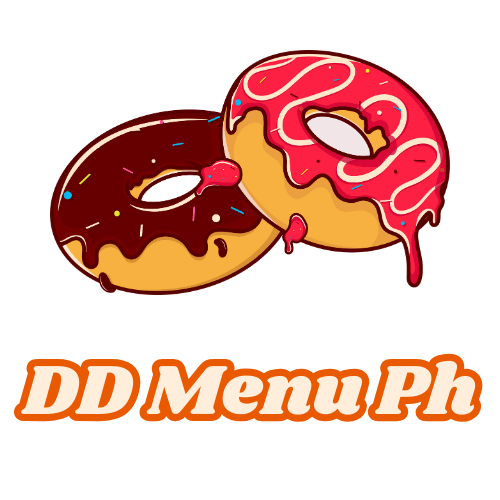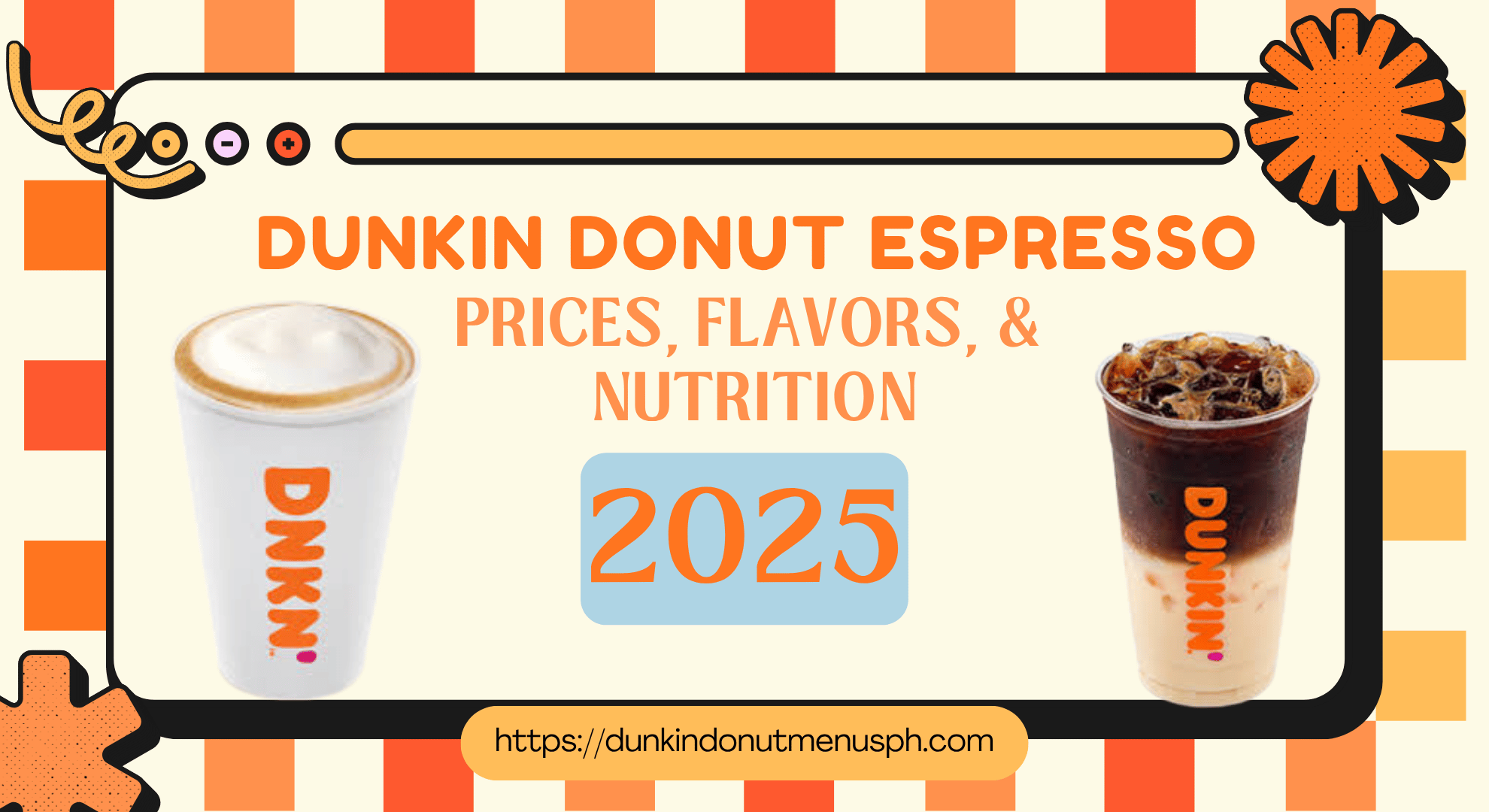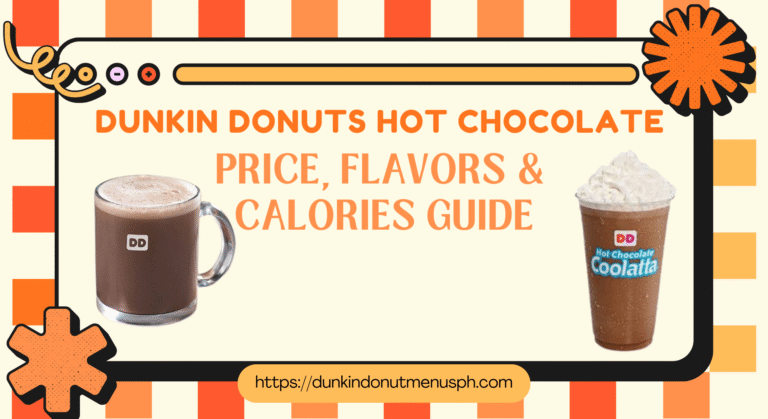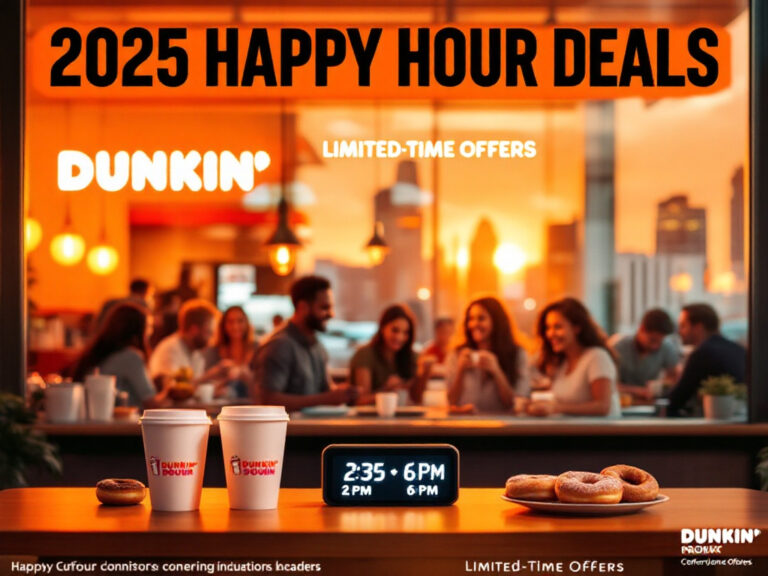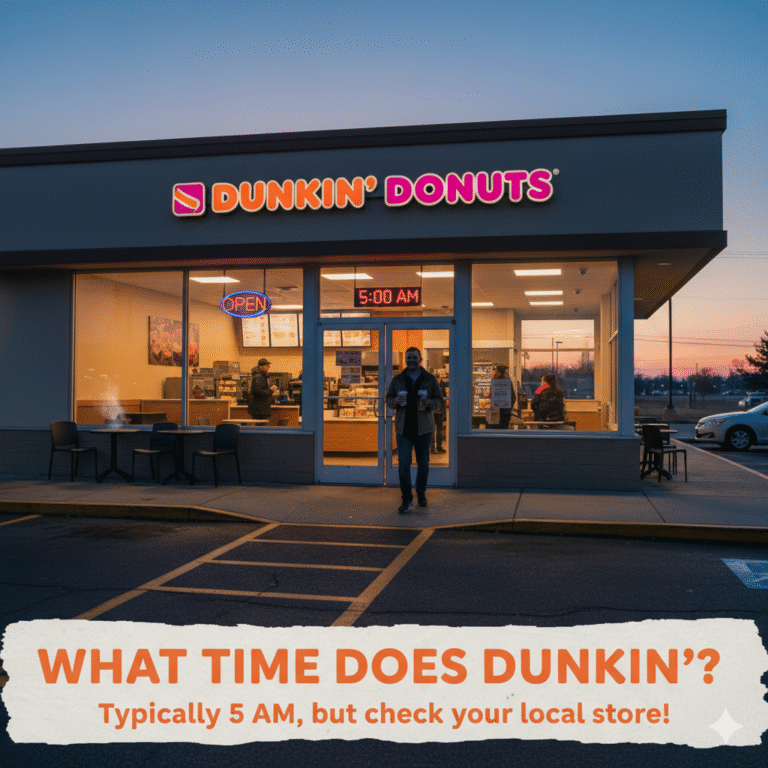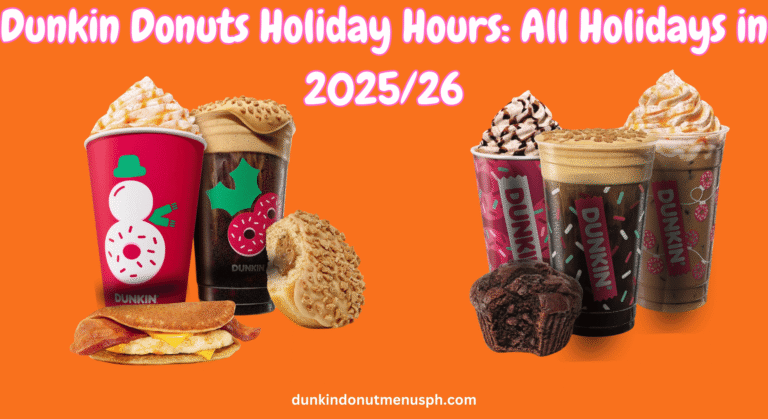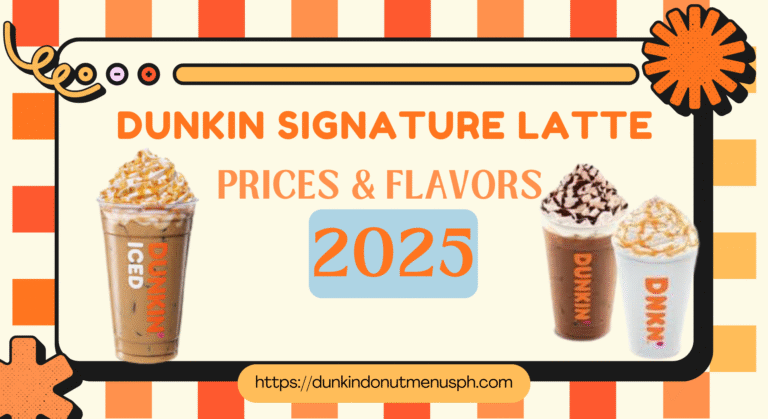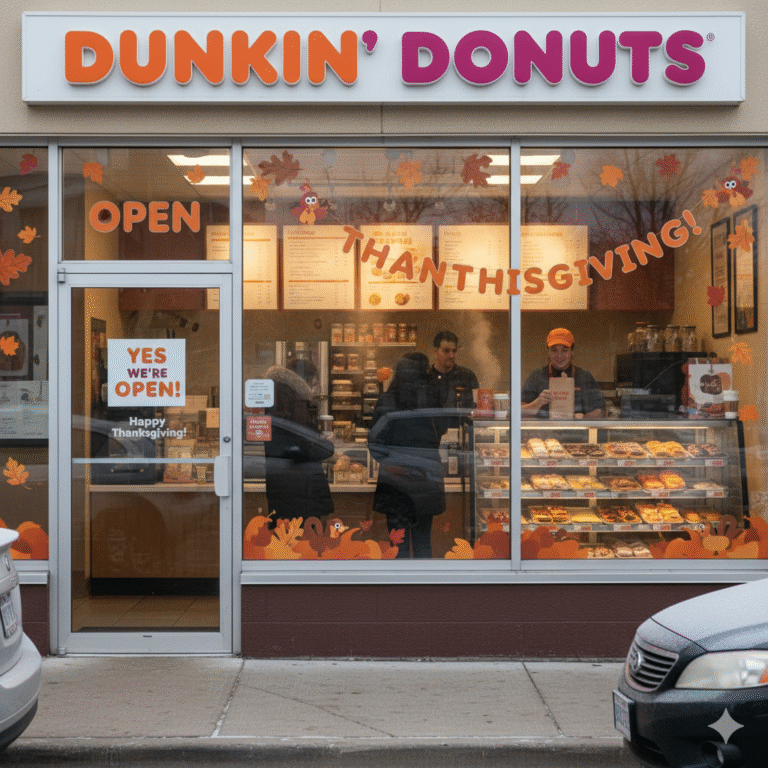Dunkin Espresso Prices, Flavors, & Nutrition 2025
If you’re like me — someone who’s survived more than a decade of early mornings, meetings, and rushed coffee runs — you know that espresso is more than a caffeine fix: it’s a ritual. Over ten years in the coffee world, I’ve seen espresso trends shift, flavor fads come and go, and nutrition claims evolve. In 2025, Dunkin’s espresso offerings are as relevant as ever, and knowing their prices, flavors, & nutrition can make your daily order smarter (and more satisfying).
In this article, I’ll share what I’ve learned: current prices (with caveats), flavor options you’ll actually want to try, nutritional breakdowns (and how to tweak them), and a few personal tips from the barista trenches. By the end, you’ll feel confident ordering Dunkin espresso like a pro.
Dunkin Espresso Prices in 2025:
One frustrating truth: espresso pricing varies heavily by region, store, and local cost pressures (rent, labor, bean supply). Yet, we can draw some useful ranges and patterns from existing data.
- According to Dunkin’s menu aggregators, a single espresso shot at Dunkin is typically priced around $1.19 (USD) in many U.S. locations.
- Adding an extra espresso shot (for a latte, cappuccino, etc.) can cost $0.99–$1.00 extra in many stores.
- Elsewhere, some menus list a single espresso nearer to $2.24, with a double shot costing around $4.36.
- Be cautious: some sources list a flat “espresso (regular or decaf)” priced at $1.19 for 5 calories in certain locales.
Takeaway: expect somewhere between $1.20 to $2.50 for a plain espresso shot in most U.S. Dunkin locations (higher in big cities or premium markets), though promos or local price hikes may push things upward.
Espresso Flavors & Customization Options
One thing I appreciate from my years behind the bar: espresso is a blank canvas. Dunkin leans into customization. Here’s what I’ve seen and tested:
Flavor Shots (Unsweetened)
These are typically sugar-free (or low sugar) and let you add a subtle flavor without overloading your drink:
- Vanilla
- Hazelnut
- Toasted Almond
- Raspberry
- Blueberry
- Coconut
Flavor Swirls (Sweetened)
These add both flavor and sweetness (with a creamy quality). They are richer and more indulgent:
- French Vanilla swirl
- Mocha swirl
- Caramel swirl
- Butter Pecan swirl
- Seasonal swirls (pumpkin, etc.)
Seasonal & Specialty Espresso Drinks
Dunkin continues to experiment. In 2025:
- The Brown Sugar Shakin’ Espresso is part of the spring menu — an iced espresso drink with brown sugar flavoring.
- The Dunkalatte, combining espresso + milk, returns for spring 2025.
- Collaborations and limited‑time offerings (e.g. Sabrina Carpenter’s “Brown Sugar Shakin’ Espresso” special) add seasonal flair
In my experience, the swirl flavors are where people most often overdo sweetness. I learned this the hard way: early in my barista days, I made a “mocha swirl triple espresso” for myself — and it tasted like chocolate syrup more than coffee. I now usually stick to one swirl pump (or a flavor shot) for balance.
Nutritional Facts: What You’re Really Drinking
Espresso in its pure form is lean — but additions change that fast. Here’s a breakdown:
Basic Espresso (Unmodified)
| Nutrient / Component | Single Shot | Double Shot |
|---|---|---|
| Calories | 5 kcal | 10 kcal |
| Total Fat | 0 g | 0 g |
| Sugar | 0 g (added sugar = 0) | same |
| Sodium | 5 mg | ~5 mg |
| Protein | 0 g | 0 g |
| Caffeine | ~118 mg | ~237 mg |
| Potassium | ~46 mg | ~92 mg |
So yes — a straight espresso is almost negligible in calories. The real nutritional decision points come with milk, sweeteners, swirls, foam, and creams.
Add‑Ons & Their Impacts
- Milk / Cream / Non‑dairy milks: Whole milk, skim, oat, almond — each adds calories and potentially sugar.
- Swirls / sweetened syrups: These can add dozens of calories per pump.
- Foams / whipped cream: Though often small additions, they contribute fat and sugars.
I’ll never forget a regular customer I served who ordered a triple espresso with oat milk, caramel swirl, whipped cream, and cold foam. It ended up being more than 300 kcal in what was supposed to be a “coffee treat.” She looked at me and said, “That’s not just caffeine; that’s dessert.” And she was right.
Conclusion
Espresso is both simple and surprisingly complex. After ten years working in coffee, I’ve found that knowing Dunkin Espresso prices, flavors, & nutrition 2025 gives you real power — you decide how bold or sweet your moment will be. Next time you order, try dialing back a swirl pump, ask for a flavor shot instead, or challenge the barista to make something new. Your taste buds (and calorie counter) will thank you.
If you found this useful, I’d love for you to do two things:
- Try a “smart espresso” — a version with a lighter swirl or alternative milk — and message me your impression.
- Share this article with a friend who always overorders sugar in their coffee.
And if you want a printable “Dunkin espresso cheat sheet” (flavor swap ideas, calorie approximations, pump guides) — I’d be glad to send one. Just ask.
FAQs
1. Does Dunkin offer decaf espresso in 2025?
Yes, many Dunkin locations offer decaf espresso or “half‑caff” options. The nutrition and calories remain virtually the same (since espresso itself is low‑calorie), but you skip most of the caffeine.
2. How many calories does a flavored espresso drink add?
Each swirl pump can add anywhere from 10 to 40 calories (depending on the syrup). A typical flavored espresso with milk and swirl could range from 70 to 300+ calories depending on size and extras.
3. Can I get my espresso iced or shaken?
Absolutely. The Brown Sugar Shakin’ Espresso is one example in 2025. You can also order iced espresso with your preferred milk and flavors. (Just be mindful of extra ice possibly diluting the flavor.)
